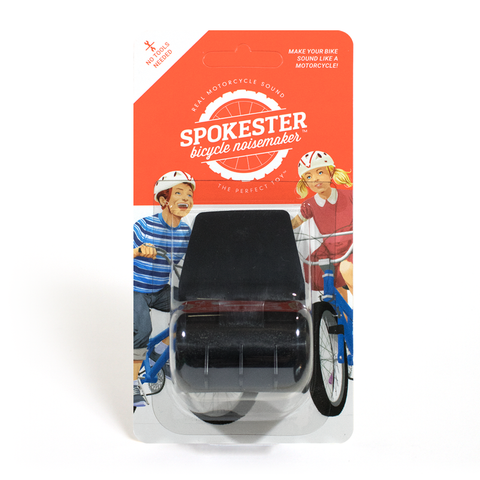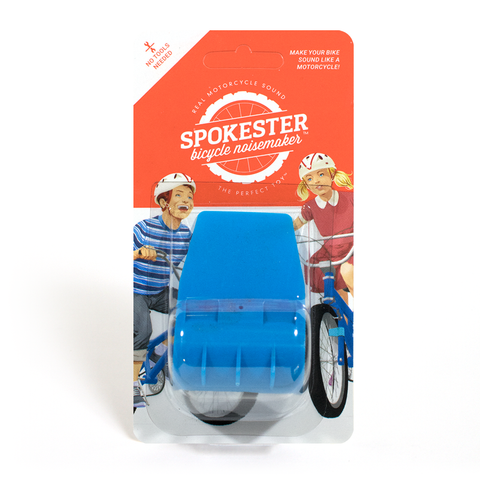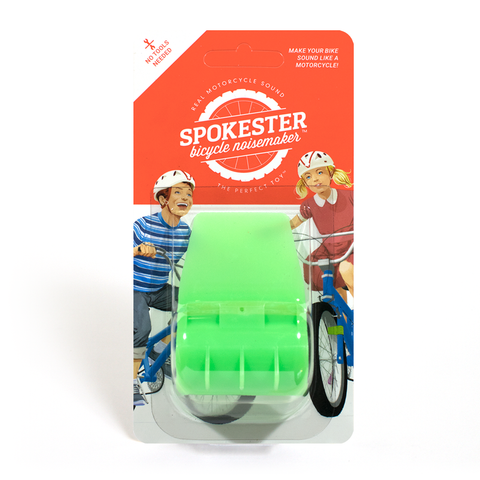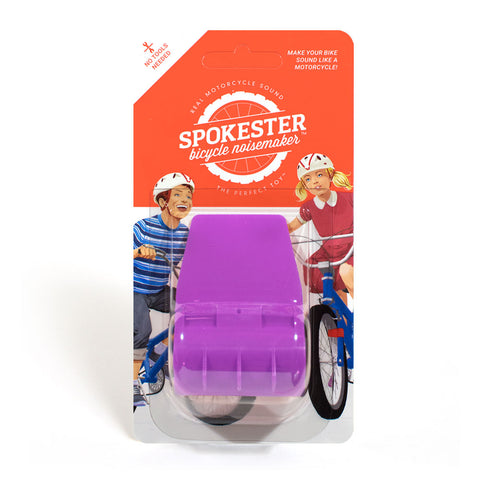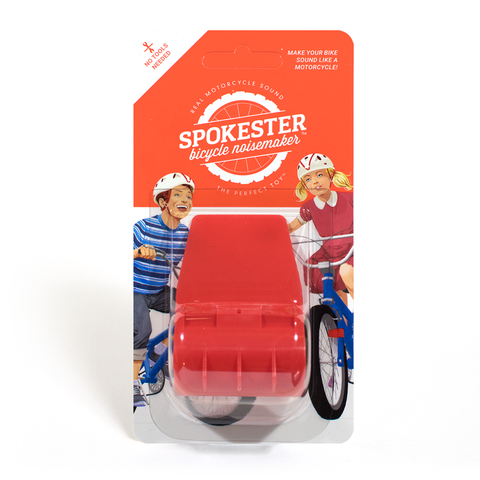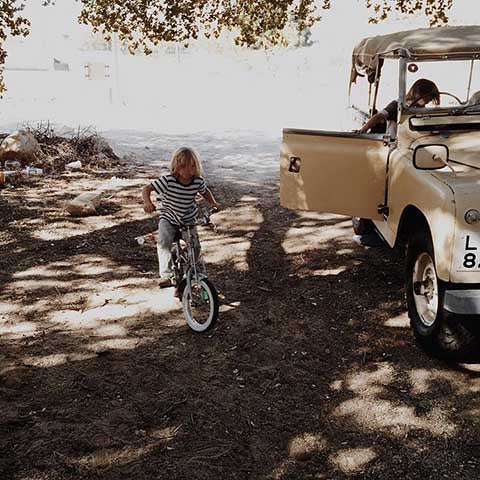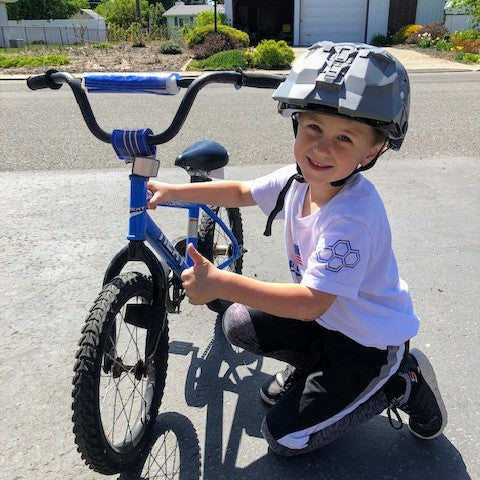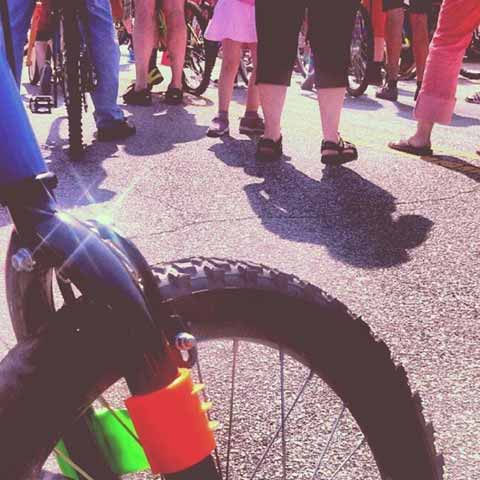Mountain Bike Suspension 101 (Before You Fork Over for Shocks)
If it's not bumpy, it's not mountain biking.
Good words to live by, at least when it comes to two-wheel adventuring. MTBs have become some of the most popular bike styles for kids. There are plenty of basic models to choose from when they're young. As they grow up, you may find their interest in the sport ballooning as well. For the uber serious riders, at some point this will more than likely lead them to mountain bike suspension systems.
Which leads us back to the bumps. Mountain bikes get their name for a reason. They're built for rocky terrain, and as riders become more advanced, rockier terrain tends to follow. Eventually they need something to mellow out the bone-rattling jolts caused by roots, branches, stones, drops, and other obstacles dotting single track. Suspension acts as a shock absorber to do just this. Plus, by letting the wheels move and up and down, the bike stays in better contact with the ground for better traction and control.
Some mountain bikes have suspension for the front wheel only, which makes them "hardtails" in biker parlance. Full- (or dual-) suspension bikes are exactly what they sound like—systems on both the front and rear wheels. For the record, you don't need suspension per se. "Rigid" MTBs are perfectly fine for casual riders and especially for younglings just starting out.
But, for those with adolescents beginning to look for some more serious mountain-biking action, we're happy to boil down the main things you need to know. We'll start with the basics of your suspension setup, including front and rear types. Then we'll take a closer look at two of the key components of any suspension system: springs and damper. Before long, you'll be blowing their minds with random mentions of things like sag, rebound, and preload. No big deal.
Mountain Bike Suspension Setup
Front Suspension
Let's talk about forks. You know them as silverware, cyclists know them as front suspension or shocks. These are connected to the metal frame with a steerer tube (suspension typically isn't used with carbon fiber bikes, you can read more about bike frame materials here). The steerer straddles the top of the wheel and connects to a stanchion on either side. Each stanchion moves in and out of a slider or "lower," which connects to both the wheel and the mount for rim or disc brakes.
Okay, now that the first anatomy lesson is over, time to introduce some more terminology related to suspension function. Travel is a big one. This is the distance suspension can move before being fully compressed. Short-travel suspension is movement of less than 120mm. This is sensitive to steering input and good for general riding on basic trails or heading uphill. Long-travel suspension is more than 120mm and applies to high-speed, rocky descents where slower steering helps with stability.
Some forks let riders adjust travel based on trail conditions at any given time. In fact, suspension in general can be designed in different ways depending on the type of mountain biking you like to do since different styles place stress on the bike in different ways. Many forks also sport a lever on the stanchion for lockout, which cuts movement altogether. This is good when you don't need to worry about travel settings on smooth surfaces like pavement or even flat and lengthy uphill sections.
Rear Suspension
Front forks are important since MTBing often involves placing your weight over the front of the bike. However, if your style of riding takes you across some insane terrain for long stretches at a time, full suspension may be the way to go. This does an even better job of mitigating punchy ground, keeping the wheel in contact with it longer and reducing rider fatigue.
Component-wise, a casing called a shock body houses two telescopic tubes that slide into each other like those on the front fork. The distance these compress under load is called stroke travel. A pivot system links the shock to the frame.
Is your head spinning yet? Don't worry, if you even get to the point of rear shocks, it's unlikely you'll be buying these separately from the bike itself. Unlike forks, these aren't usually interchangeable between bike brands and models. So you got that going for you.
Suspension Springs
Coil Spring
If we were to follow this article up with a grade school-style vocabulary test, this one would be the gimme. The part of a mountain bike's shock absorbers that provides the spring is called—drumroll—the spring. Just like your click pen, springs absorb the pressure and then bounce back to starting position. You'll find two types of springs vying for your hard-earned dollar: coil and air.
The first is coil, which is basically a wine bottle opener with some give. A wound corkscrew of steel (or titanium if money's no object) compresses at a smooth, steady rate. You can tune how hard or soft this compression is, which is a setting known as preload. The range is fairly small, so if you need a much harder or softer setting then you'll need to change out the spring. Coils are sensitive on the plus side, but they can also be as much as a pound heavier than the alternative.
Air Spring
Pressurized air springs are more common across the MTB spectrum these days. Their hydraulic operation compresses the suspension at a progressive rate that starts soft and stiffens the further it goes. Similar to preload in coil springs, the appropriate pressure is important for ideal performance. If you have too much, you might as well not even be using shocks at all. With too little, you're at risk of bottoming out and damaging the suspension on big impacts (again, may as well just be using a rigid bike). Like tire pumps, shock pumps can help you set the right resistance for your weight and style of riding.
Air springs have a greater range of tunability than coil springs. They're also lighter, which is nice as the accessories start to pile up once you move into more challenging mountain biking environments. Some riders prefer coil springs because of the sensitivity, but newer air models have started to match this type of performance more closely.
Sag
Let's say you're on your bike chatting it up with a buddy while you wait your turn on the downhill sprint. The amount your suspension is compressed while you're just sitting there is called sag. More sag produced by body weight alone leads to a softer ride.
The manufacturer should offer a recommended amount of sag for any kind of suspension. You'll want to make sure coil preload or air pressure is calibrated correctly so that your wheels can effectively perform on rugged ground. As a metric, sag is a percentage of the total travel the suspension offers. It varies anywhere from 15-30% on average depending on the style of mountain bike.
Suspension Damper
Damper Function
Damping is another important concept when it comes to MTB suspension and goes hand in hand with the spring. As we've established, springs spring. Without some sort of check, they'd keep springing like an out of control jack-in-the-box. A damper, therefore, acts as this check by dissipating the spring's energy. So, if the spring is responsible for creating the resistance upon impact, the damper is responsible for controlling the resistance.
Most dampers accomplish this using an oil bath. When shocks are activated, a piston forces oil through a hole called an orifice. Energy is transferred from the spring to the oil and converted into heat. The faster the compression, the more resistance created and the more energy dissipated.
Types of Damping
Spring/damper balance is critical for quality suspension. Adjusting a shock's damping is known as "tuning the fork." There are two types of damping to be aware of here so that you don't find yourself on a pogo stick with pedals. One is compression, the other is rebound.
The first controls the spring's impact absorption. Low-speed compression damping works on your run-of-the-mill events such as basic pedaling, braking, turning, etc. In other words, things that activate suspension at a slow rate. High-speed compression, on the other hand, comes into play during high-impact events like jumps, severe bumps, and the like. This is less common on intro or lower-end mountain bikes.
If compression damping is all about pressing the spring, rebound damping has to do with releasing it by controlling the rate shocks return to their original position. More rebound equals slower return and vice versa. As with everything else we've touched on, you're looking for balance.
MTB Suspension Shopping Tips
If this is the first time you've ever dabbled in shock absorbers, we understand if this all sounds a bit technical. Hey, it's a sophisticated system for a specialized bike. But don't think for a second this means you need to drop half a month's salary for good, dependable suspension, especially if it's for your kid's first MTB. Start modestly, then build your way up as he/she shows continued interest and makes mountain biking a true passion.
If that happens, then at some point you'll need to consider stepping things up a notch. Like dad always says, you get what you pay for. A higher-quality system has its benefits:
- Lighter components without sacrificing strength
- Ability to make more adjustments to get it just right for you
- Greater durability through superior construction
- Overall smoother ride due to all of the above
When you do start looking around for these parts, keep in mind that bicycle makers usually don't make suspension systems in addition to bikes. If you want to find good info on shocks, go directly to the manufacturers who make them. FOX and RockShox are two of the most popular, with other reputable brands being Manitou, Marzocchi, and SRSUNTOUR.
There, now that we've put a spring in your step, go show off this fresh knowledge to your little gearheads and bask in the glow of their newfound (albeit temporary, are we right?!) respect for their elder clansman.
← Older post Newer post →
